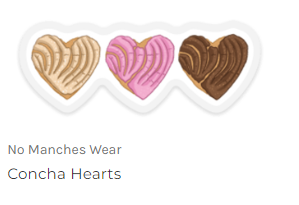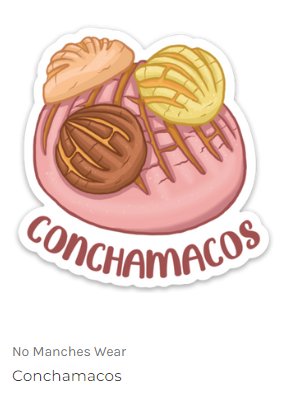If you have a sweet tooth, you probably love conchas and donuts as much as we do. With that in mind, we have organized a sweet showdown: conchas vs donuts. What are their origins? Who invented them? Keep reading to discover the answers to these questions, and then some.
What Are Conchas?
Conchas are what Mexicans call “pan dulce,” which literally means “sweet bread” and can be translated as “pastries.”
There are many different types of pan dulce, but they’re all delicious and have unusual fun names such as chilindrina, puerquito, picon, or niño envuelto. Conchas are probably the most common and popular type of pan dulce.
Conchas (“seashells” in Spanish) owe their name to their characteristic grooves that resemble those on the surface of a seashell.
Who Invented Conchas?
We don’t know for sure who invented conchas, but we have a rough idea of when and how it happened.
The first step in the creation of conchas happened when the Spanish introduced wheat into Mexico. However, their bread was rather plain. It was only later, with a new wave of French and Italian immigrants that conchas saw the light of day for the first time.
The French introduced the use of butter for decorative purposes and the Italians opened cafes where conchas quickly became all the rage.
What Are Donuts?
As you probably know, donuts (also spelled doughnuts) are a type of fried pastry that is shaped like a ring or filled with a sweet filling such as pastry cream, chocolate, or jelly.
As you might imagine, the word “doughnut” is a combination of the words “dough” and “nut,” where “nut” has the sense of “small dumpling.”
While native to the United States, donuts are loved around the world thanks in large part to American baked goods chains that have brought donuts to dozens of countries.
Who Invented Donuts?
Legend has it that donuts were invented by American ship captain Hanson Gregory.
According to Gregory’s version, fried pastries were common and came in different types, including braids and diamonds. However, all of them ran into the same problem regardless of their shape: the outer parts of the pastry cooked first while the center remained uncooked.
Gregory’s solution was to get rid of the center of the doughnut. So he took the cover off a tin pepper box and cut a hole in the middle of an uncooked dumpling of dough. A pastry superstar was born.
Conchas vs Donuts: a Sweet Showdown
After learning more about the history of donuts and conchas, it’s time to see how these two pastries stack up against each other.
- Have you tried conchas with hot chocolate? It’s a heavenly combination! However, coffee and donuts are a pairing as classic as wine and cheese or cookies and milk.
- Donuts are known around the world, while conchas are common only in some areas of Latin America and the United States. However, that’s changing fast, and conchas are gaining fans in many other countries.
- Donuts are great if you want to eat something on-to-go, while conchas are better suited for a fun moment of relaxation.
- Conchas have the most original name. However, donuts are so popular that the word “donut” is being adopted into other languages (see, for example, the Spanish word “dona”).
- Donuts can be glazed, dipped in chocolate, and dressed up in a variety of ways. Conchas, on the other hand, are more traditional: the concha topping recipe is a time-honored one (it consists of butter or vegetable shortening, flour, and sugar)
The Verdict
When it comes to conchas vs donuts, there’s a clear winner: Us! We can choose to enjoy donuts or conchas and contemplate the stories that come with each bite whenever and however we like.
So, the next time someone asks you to choose between conchas and donuts, feel free to reply: ¿Por qué no los dos?
Sabukana: Unapologetically Embrace Yourself
Sabukana was created by two Latina sisters, Melanie and Scarlett, to celebrate their Latin roots and multicultural upbringing with a modern twist.
Our creations are made for people who unapologetically embrace their own. They represent our cultures, serving as a reminder of where we come from and who we are.

















